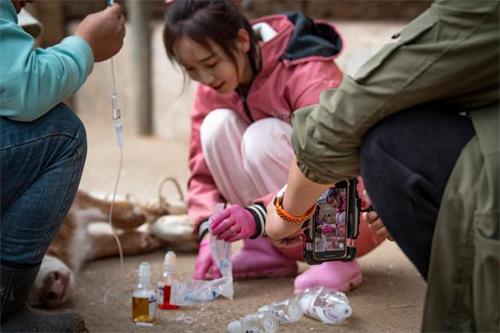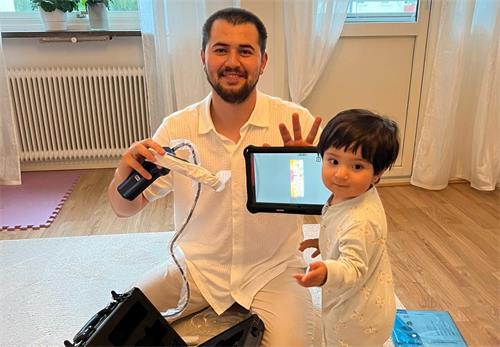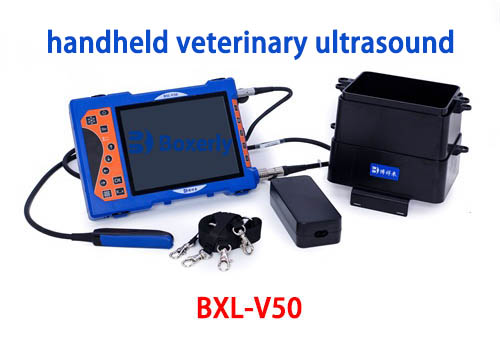Veterinary medicine plays a crucial role in maintaining the health and welfare of animals, especially in livestock farming. Just as in human healthcare, veterinarians rely on a wide range of specialized equipment to diagnose, treat, and monitor animal health. This article explores the most common types of veterinary medical equipment used in clinical practice and on farms, from basic diagnostic tools to advanced imaging technologies.

Common veterinary medical equipment
-
Stethoscope and Thermometer
At the foundation of any physical examination are the stethoscope and thermometer. These simple yet essential tools help veterinarians gather basic information about an animal’s health. The stethoscope is used to listen to heart, lung, and gastrointestinal sounds, while a rectal thermometer is typically used to measure body temperature in livestock species like cattle, Porci, și oi.
Digital thermometers are increasingly preferred over mercury ones due to their ease of use and safety. Regular temperature monitoring is especially important during disease outbreaks or when animals exhibit signs of infection.
-
Portable Ultrasound Machines
Ultrasound equipment is indispensable in modern veterinary medicine, especially for reproductive management and internal diagnostics. Portable veterinary ultrasound machines are commonly used on farms to confirm pregnancies in cattle, oaie, Porci, and goats. This non-invasive technology allows veterinarians to detect pregnancies as early as 30 zile post-reproducere, improving herd management and optimizing breeding cycles.
Beyond reproduction, ultrasound imaging helps assess abdominal organs, monitorizarea dezvoltării fetale, identify injuries, and guide certain procedures like biopsies or fluid aspiration.BXL is a professional manufacturer of veterinary ultrasound equipment. If you need assistance, you can add us on WhatsApp at +86 13676902996.
-
Veterinary X-Ray Equipment
Radiographic imaging, or X-rays, is essential for diagnosing musculoskeletal injuries, detecting foreign bodies, and identifying lung or heart abnormalities. Modern veterinary X-ray machines are often digital and portable, allowing them to be used in both clinic and field settings.
For large animals like horses or cattle, portable X-ray systems with wireless image transfer capabilities are highly beneficial. Radiography is especially useful for evaluating lameness in livestock and confirming fractures or joint disorders.
-
Syringes and Needles
Every veterinarian carries a range of syringes and needles to administer medications, vaccines, and anesthetics or to collect blood samples. These come in various sizes and gauges to accommodate different animal species and procedures. In livestock farming, vaccination programs are a key component of disease prevention, and efficient use of syringes is critical to maintaining herd immunity.
Veterinarians must ensure proper sterilization and disposal practices to prevent cross-contamination and needle-stick injuries.
-
Animal Restraint Equipment
Handling and restraining animals safely is crucial for both the animal and the handler. Common restraint tools include ropes, halters, squeeze chutes, and head gates, which are especially important for large and potentially dangerous livestock like bulls or aggressive sows.
Portable pens or handling crates are also used during field visits to safely examine or treat animals in remote locations. Restraint must always be performed in a humane manner that minimizes stress and injury.
-
Blood Analyzers and Diagnostic Kits
Point-of-care diagnostic equipment has become increasingly important in field veterinary work. Compact blood analyzers can perform a variety of tests such as complete blood counts (CBC), blood chemistry panels, and electrolyte assessments within minutes.
În plus, rapid diagnostic kits are available for diseases like bovine viral diarrhea (BVD), mastitis, avian influenza, and foot-and-mouth disease. These tools enable veterinarians to make fast decisions about treatment or quarantine measures, which is especially important during disease outbreaks.
-
Dental Equipment
Dental care is often overlooked in livestock but is essential for long-term productivity and health. In horses and small ruminants, veterinarians use dental floats, speculums, and extraction tools to manage tooth wear, infections, or malocclusion.
In cattle, oral health is linked to feed efficiency, and issues such as broken teeth or abscesses can reduce performance. Routine dental checks help improve feed intake and reduce discomfort in aging livestock.

-
Surgical Instruments
Surgical procedures, from cesarean sections to castrations and wound suturing, require a complete set of sterile instruments. Common tools include scalpels, forceps, hemostats, scissors, and needle holders. Field surgeries often take place under challenging conditions, so portable surgical kits must be well-organized and durable.
Veterinarians also use mobile surgical tables and sterile drapes to create a clean environment, especially for emergency procedures performed outdoors or in barnyards.
-
Hoof Care Tools
Hoof problems are one of the most common health concerns in livestock, especially dairy cattle and sheep. Veterinarians and hoof trimmers use hoof knives, nippers, rasps, and hoof testers to identify and treat conditions such as foot rot, laminitis, or abscesses.
Proper hoof care not only prevents lameness but also improves mobility and productivity. Preventive trimming, foot baths, and regular inspection are vital components of herd health protocols.
-
Oxygen and Anesthesia Machines
In more advanced clinical settings, oxygen delivery systems and anesthetic machines are used to support animals during surgery or recovery. These systems ensure controlled sedation, pain management, and respiratory support.
For field use, portable anesthesia devices, including gas anesthesia or injectable protocols, are employed for short-term procedures or minor surgeries. The use of anesthesia must be closely monitored to avoid complications, especially in large ruminants or compromised animals.

Concluzie
Veterinary medicine relies on a diverse array of equipment to ensure effective and humane care for livestock. From basic tools like thermometers and syringes to advanced diagnostic systems such as ultrasound and radiography, each piece of equipment serves a vital purpose. As technology continues to advance, veterinary professionals are better equipped to diagnose and treat illnesses, improve animal welfare, and support the productivity of farming operations.
Whether on a large-scale dairy farm or a small family operation, access to reliable veterinary equipment remains a cornerstone of good animal husbandry. Understanding and maintaining these tools is not only the responsibility of veterinarians but also of farm managers and caretakers who work with animals daily.
